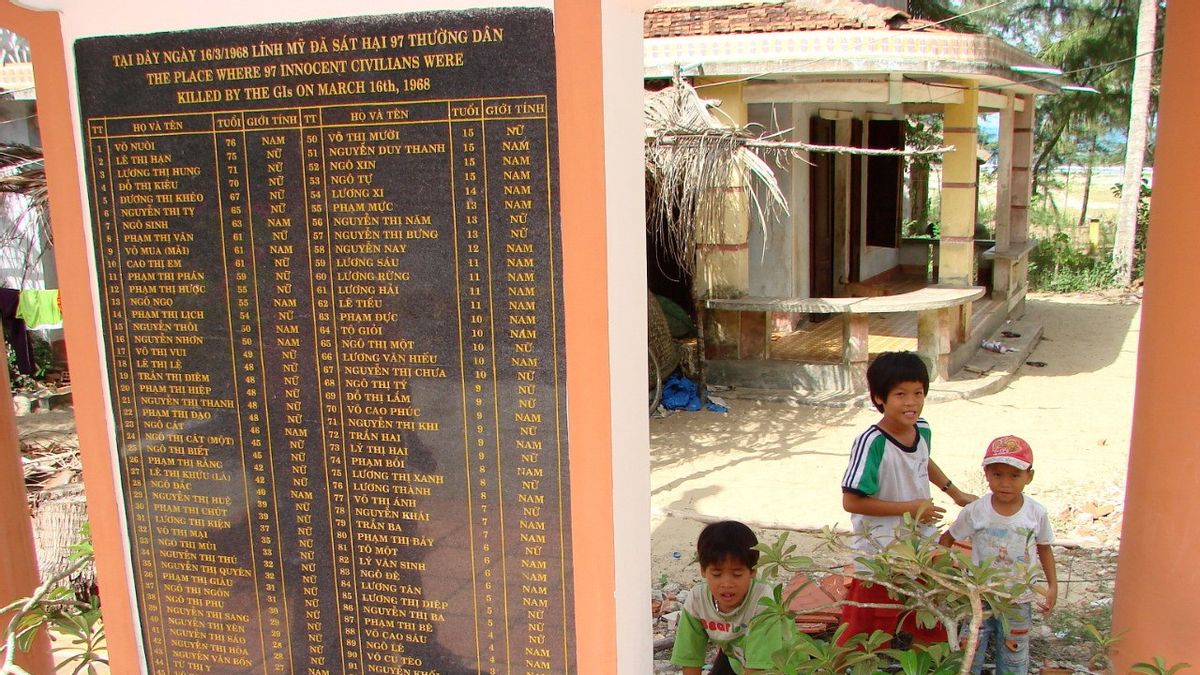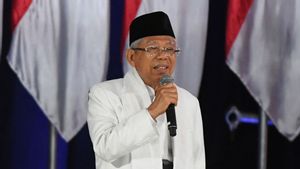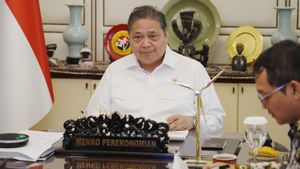JAKARTA - That night, before the raid, US Army C Company Commander Ernest Medina held a briefing. It is not clear what the orders are. The soldiers were blind about what they should do if they found civilians in My Lai hamlet. Yet their goal was one: to destroy the guerrillas of the People's Liberation Armed Forces of the National Front for the Liberation of Vietnam (FNPV).
In the morning, a platoon of American troops led by Lieutenant Willian Calley entered My Lai hamlet, which was thought to be the home of the FNPV. When the troops arrived, the residents ranging from children, youth, and the elderly were carrying out their daily activities as usual.
Without carelessly, the troops then massacred nearly 500 unarmed civilians there. In addition, some residents were put in a bunker where they were hiding, where they were pelted with grenades, and many women were raped before being killed.
The My Lai massacre occurred today March 16 52 years ago or in 1968. The story was written by Rudhi Aviantara in the Trisakti University Humanitarian Law Journal (2008).
The My Lai massacre is one of the darkest portraits in the history of the Vietnam War or the Second Indochina War that took place between 1957 and 1975. This war was part of the Cold War.
The mainland in Indochina is split into two alliances, namely the Republic of Vietnam (South Vietnam) and the Democratic Republic of Vietnam (North Vietnam). In that war, South Vietnam was supported by the United States, South Korea, Thailand, Australia, New Zealand and the Philippines. Meanwhile, North Vietnam is a communist country supported by the Soviet Union and China.
United States troops who are an alliance of South Vietnam suspect My Lai Village in Quang Ngai Province as a shelter for guerrillas of enemy forces, namely the People's Liberation Army of the National Front for the Liberation of Vietnam (FNPV). The American troops considered the guerrilla group, also called the Viet Cong, to be eliminated
The mission to eradicate "leftist forces" takes priority. Because of its importance, American troops used the number of corpses of residents suspected of being FNPV guerrillas as an indicator of their achievement. American troops no longer measure how many territories or strategic locations were captured or controlled as targets of operations.
American disgrace
After the massacre, two US Army officers, Tom Glen and Ron Ridenhour, reported to US President Nixon. The news was soon spread widely in the land of Uncle Sam's country. Most people respond negatively.
As a result of the incident, quoting the due issue of June 1, 2003, in 1971, the US military court only imposed criminal sanctions on one officer, namely Lieutenant William Calley. He was declared guilty for committing premeditated murder by ordering the shooting of civilians.
He was proven to have killed at least 22 civilians and was sentenced to life imprisonment. However, Nixon pardoned him in 1974. The court verdict certainly disappointed the relatives of the victims.
However, the biggest impact was the change in attitudes of US citizens regarding the Indochina war. Two weeks after Lieutenant Calley's verdict was handed down, opinion polls show for the first time majority American support for the Vietnam War is missing.
The English, Chinese, Japanese, Arabic, and French versions are automatically generated by the AI. So there may still be inaccuracies in translating, please always see Indonesian as our main language. (system supported by DigitalSiber.id)









